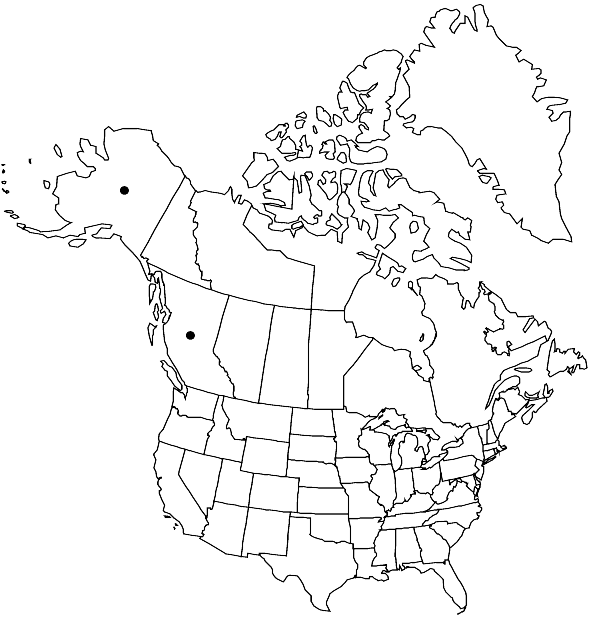Difference between revisions of "Polytrichastrum sexangulare var. vulcanicum"
Bryologist 95: 270. 1992,.
FNA>Volume Importer |
FNA>Volume Importer |
(No difference)
| |
Revision as of 21:51, 16 December 2019
Plants small, forming large brownish mats. Stems with 5–6 layers of thick-walled cortical cells. Leaves incurved and closely appressed to the stem when dry, erect-spreading when moist; sheath poorly delimited; marginal lamina expanded and involute, covering the lamellae; perichaetial leaves abruptly narrowed to the blade. Seta arcuate with age. Capsule nearly globose, horizontal to nodding; peristome teeth 32, short, attenuate, the alternate teeth often smaller.
Habitat: Volcanic rocks
Elevation: high elevations
Distribution

B.C., Alaska, e Asia (Japan), Atlantic Islands (Iceland).
Discussion
Variety vulcanicum is notable for the rather thick, curved seta, nodding, globose capsule, and the stem cortex composed of very thick-walled cells, in contrast to the thin-walled cortex of var. sexangulare. It is probably best considered a variety of P. sexangulare, despite its distinctive peristome and the absence of capsule angles. E. Lawton (1971) described intermediate forms in British Columbia with acute-tipped leaves and angled capsules, but with the stem cortical cells and peristome of var. vulcanicum.
Selected References
None.